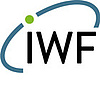The term “Space Weather” deals with the dynamic conditions in the Earth’s outer space environment including the physical processes on the Sun, in the solar wind, the magnetosphere and in the upper atmosphere. Accompanying with the rapid technological progress in the last decades space weather effects can directly be perceptible in people’s everyday life (e.g., power supply, satellite navigation). A fundamental driver of space weather is the interaction between the Earth’s magnetosphere and the solar wind, embedded in the interplanetary magnetic field (IMF). Thereby, different kinds of solar events have the capability to trigger atmospheric disturbances and subsequently influence the trajectories of Earth orbiting satellites and space debris objects. The strongest disturbances of the space environment are primarily caused by coronal mass ejections (CMEs). Their interaction with the Earth’s magnetic field has the potential to trigger geomagnetic storms and subsequently influence the Earth’s atmosphere. Likewise, solar flares or co-rotating interactions regions (CIR) have also an impact on the Earth’s atmosphere, but with different characteristics and consequences (e.g., lead time, duration, irradiance). As stated by the US National Research Council (2013) it is a persisting problem to fully understand the physical processes in the Earth’s space environment which arise during a magnetic storm as well as to quantify the global effect of space weather drivers. Hence, the accurate and in time prediction of neutral density changes in the thermosphere is still unfeasible. The key element of the proposed project is to thoroughly explore the response of the Earth’s upper atmosphere during solar phenomena. To classify the intensity of an event we aspire to estimate the orbit decay rate of several low Earth orbiting satellites at different altitudes. A precise and above all reliable assessment of solar event-induced satellite decay rates is only feasible if we thoroughly consider the physical characteristics in the interplanetary space (irradiation, IMF properties) together with the dynamically changing chemical composition of the atmosphere during the occurrence of solar phenomena. The latter will be essential, since high concentrations of specific chemical constituents like nitric oxide (NO), carbon dioxide (CO2), atomic oxygen (O) are the primary sources of infrared (IR) radiative cooling processes in the thermosphere. Subsequently, they can counteract the thermosphere heating arising from solar events like CME, CIR or solar flares.
Together with the Space Research Institute further attention will be paid to the enhancement of the photochemical production of supra-thermal particles during solar extreme events, since they play an important role in ion escape processes and density enhancements near the exobase. Consequently, simulations regarding solar wind induced soft x-ray emissions triggered by the charge exchange between heavy ions in the solar wind and the atmospheric neutral particles during varying solar wind conditions will be carried out.


